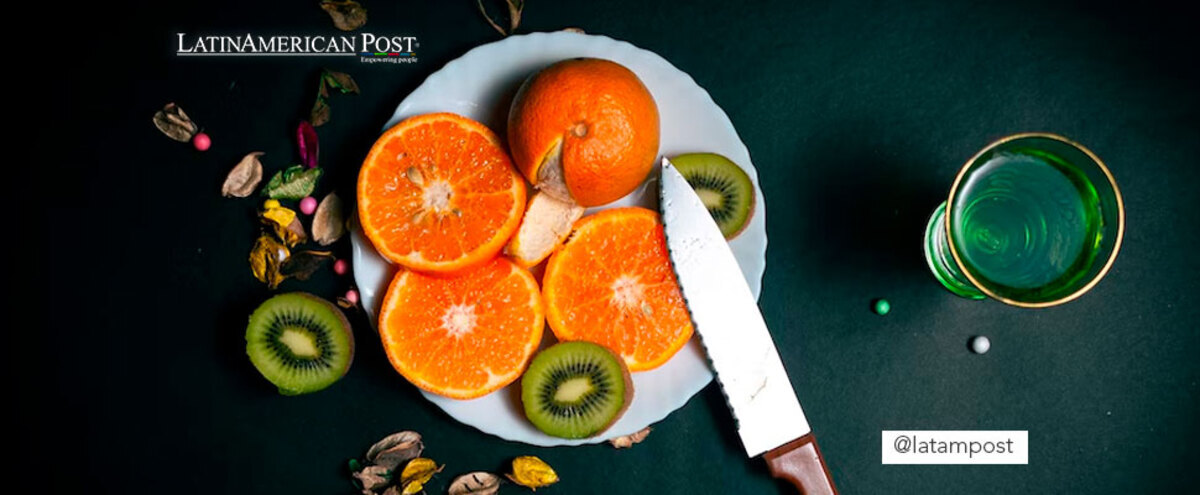Winter and Rainy Season: 10 Foods Rich in Vitamin C to Protect your Health
Vitamin C is Important to Prevent Complications From Respiratory Infections. We Tell you About Foods that Provide this Substance.

Photo: Unsplash
LatinAmerican Post | Brandon Martínez Salazar
Listen to this article
Leer en español: Temporada invernal y de lluvias: 10 alimentos ricos en vitamina C para proteger tu salud
2022 has been a year marked by constant rains and extreme weather events with the La Niña phenomenon. The rainy season that is affecting several regions of Latin America and the arrival of winter in the northern hemisphere, bring with them a considerable increase in acute respiratory infections (ARI) and serious infections (SARI).
Faced with this situation, health institutions make a call to follow certain recommendations in order to avoid complications in the well-being of people and congestion in healthcare centers. For this reason, it is important to highlight that for this end of the year it is strictly essential to eat a diet rich in vitamin C, as this will allow us to have a strong immune system against viruses.
The importance of Vitamin C for health
It is known as ascorbic acid and it is specifically a water-soluble nutrient, that is, a vitamin that dissolves in water and is not stored in the body. In addition, its action in the body is fundamental, since it works as an antioxidant, thus, it protects human beings from the so-called free radicals, compounds that are produced when the body converts some foods into energy or those that are in the environment such as pollution or radiation. The latter are closely related to the development of cancer.
However, in the face of respiratory diseases, it is not clear that vitamin C prevents them from occurring. However, diets rich in this nutrient do manage to have a positive effect by fighting viruses and bacteria in winter seasons. What will be reflected in respiratory diseases with mild symptoms and short duration.
Foods rich in Vitamin C
According to the Clinic of the University of Navarra, vitamin C is present in a large number of foods, which if consumed regularly would not require an additional supply of vitamin supplements. However, it clarifies that the deficiency of this nutrient can cause scurvy, a blood disease whose symptoms are swelling, bleeding gums, joint pain, among others.
For this reason, we point out ten foods rich in vitamin C and the number of milligrams of this vitamin that it provides for every 100 grams of consumption. The amount to be consumed varies according to sex and age. Adult women should consume about 75 milligrams daily and adult men 90 milligrams, according to the US National Institutes of Health. Girls and boys ages 1 to 3 should consume 15 mg; from 4 to 8 years, 25 mg; and from 9 to 13 years, 45 mg. If you are a smoker, it is necessary to add 35 milligrams more and pregnant and lactating women should also increase their consumption, according to medical recommendations.
- Guava: 273 mg.
- Peppers or paprika: 131 mg.
- Broccoli: 110mg.
- Papaya: 80 mg.
- Kiwi: 71mg.
- Raspberry: 60mg.
- Lemon and orange: 50 mg.
- Grapefruit: 44mg.
- Turnip greens and turnip greens: 40 mg.
- Mango: 37mg.
We recommend you read:Can drinking alcohol have health benefits?
The role of Vitamin C against COVID-19
According to a study published in the Molecule Magazine, in South Korea it was possible to demonstrate that vitamin C treatments given to patients with COVID-19 had antiviral effects and turned out to play a very important role in mitigating the severity of those suffering from coronavirus.
In that sense, vitamin C proved to be a highly effective nutrient for improving immunity in people. On the other hand, the study found that a large part of those sick with COVID-19 had nutritional deficiencies and that this increased the severity of the disease. That is why this vitamin is a promising solution to stimulate the immune system, prevent the spread of the virus and reduce the progression of the disease in serious stages.




